MP Calls on Openreach to Pause Pole Builds After Alleged Rule Breach and Whistleblower

The recent dispute between residents in the seaside town of Southport (Merseyside) and Openreach reached UK parliament yesterday, with the local Conservative MP, Damien Moore, claiming that an alleged “whistleblower” had revealed that the broadband builder was sidestepping its own rules on pole deployments.
In case anybody missed the previous developments (here). Openreach’s efforts to deploy a new gigabit-capable Fibre-to-the-Premises (FTTP) broadband ISP network in part of the town recently became the latest of many such builds, by lots of different network operators, to run into a conflict with local residents who object to the use of c.9 metre high wood poles to run the new fibre.
Openreach are using poles in the area because they don’t have existing ducts to use, only direct buried cables. However, despite being significantly cheaper, less disruptive and quicker to deploy than running new trenches down pavements, poles also have a tendency to rub people up the wrong way. This is particularly true when they’re deployed along streets that haven’t previously had them before, or where too many poles already exist.
People who complain often focus on their negative visual appearance, as well as concerns about exposure to damage from major storms (example), the lack of effective prior consultation or engineers that fail to follow safety rules while building (examples here, here, here, here, here, here, here, here, here, here and here).
The problem for network operators is that the high cost of trenching means poles often make the difference between an area getting a competitive full fibre network or being skipped, which can result in an awkward patchwork of network coverage. Openreach’s ability to deploy poles also impacts other network operators, since rivals can also access them to run their own competitive fibre network via the regulated PIA product.
What happened in the House of Commons
The latest development from Southport is particularly notable because the local Conservative MP, Damien Moore, has now raised the case in parliament and made some strong accusations against Openreach’s conduct in the town. Moore also called upon the operator to “put a pause on all activity … where it cannot be confirmed that it has adhered to its own policies and procedures.”
Damien Moore MP said:
“According to a whistleblower allegedly within Openreach, the transition to overhead cabling has on too many occasions appeared to be proceeding without sufficient consultation with key stakeholders and, more importantly, local residents. Regrettably, in my constituency of Southport, it would appear that Openreach has sidestepped its own procedures for gaining community agreement, disrespecting the will of local residents.
I call on the Leader of the House to request that the relevant Minister make a statement on these practices by Openreach. It is imperative that we ensure Openreach’s strict adherence to its own policies and legal responsibilities, particularly if those were taken into account when it was awarded the contract. I also urge the Leader of the House to urge the Minister to put a pause on all activity by Openreach where it cannot be confirmed that it has adhered to its own policies and procedures.”
In response, Penny Mordaunt MP pledged to “ensure that the Secretary of State has heard what he has said … I will write on his behalf and ask that an official from the Department gets in touch with his office swiftly.” But it’s currently unclear whether such action will result in any practical or wider changes.
Openreach has denied the accusations and said they “engaged extensively” with residents in the affected area and “explored every possible option for the build“, while also working to “position any new poles sensitively“.
A spokesperson for Openreach said (BBC):
“We know some people feel strongly about poles and understand why. However, to say we haven’t engaged with local residents is simply not true.
Wherever possible we use existing network to build our broadband upgrades, but in Southport cables are mainly buried direct in the ground.
The scale and cost of civil engineering to install new underground ducts throughout the area just isn’t viable and would involve months of road closures and disruptions.”
The operator also makes the very valid point that Southport currently has poor coverage of gigabit-capable broadband (Virgin Media has the most coverage, but only across around 20% of the town) and thus halting the build would indeed “deprive thousands of other local people who want the new technology“. Interestingly, a quick look at forward build plans for the area suggests that there’s actually not a lot of activity currently taking place or planned for the near future, but that may because some of it is done under PD rights.
As we’ve said before, local authorities are limited in their powers to stop such work and the UK government remains unlikely to pay much heed to any attempts to restrict it – any limitations on such builds would seriously damage their own targets for digital infrastructure under Project Gigabit (i.e. “nationwide” (c.99%) gigabit broadband coverage by 2030).
Lest we also forget that quite a lot of people would still be happy to see poles if it meant they could access more affordable full fibre broadband, but such voices are often drowned out by vocal campaigners. On the other hand, there’s a General Election looming and, as similar complaints grow, politicians may need to do more than merely play lip service to the issue. Suffice to say, there’s a very difficult balancing act to be performed.
Mark is a professional technology writer, IT consultant and computer engineer from Dorset (England), he also founded ISPreview in 1999 and enjoys analysing the latest telecoms and broadband developments. Find me on X (Twitter), Mastodon, Facebook and Linkedin.
« ISP Brsk Discount UK Full Fibre Broadband Prices for March 2024
Virgin Media UK Adds DAZN FAST Channel for Women’s Football »
Latest UK ISP News
- FTTP (5695)
- BT (3559)
- Politics (2593)
- Openreach (2338)
- Business (2313)
- Building Digital UK (2272)
- FTTC (2059)
- Mobile Broadband (2031)
- Statistics (1823)
- 4G (1718)
- Virgin Media (1669)
- Ofcom Regulation (1488)
- Fibre Optic (1421)
- Wireless Internet (1415)
- FTTH (1383)







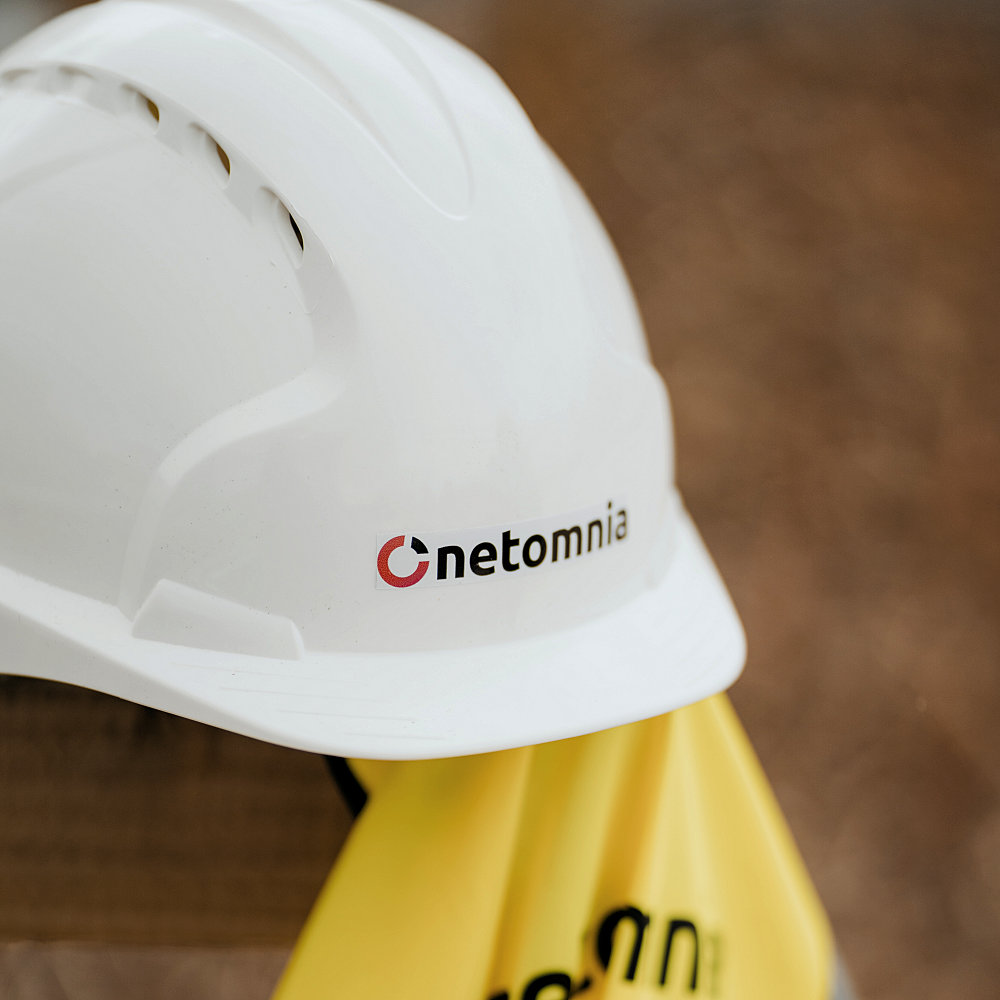

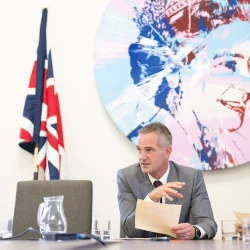

























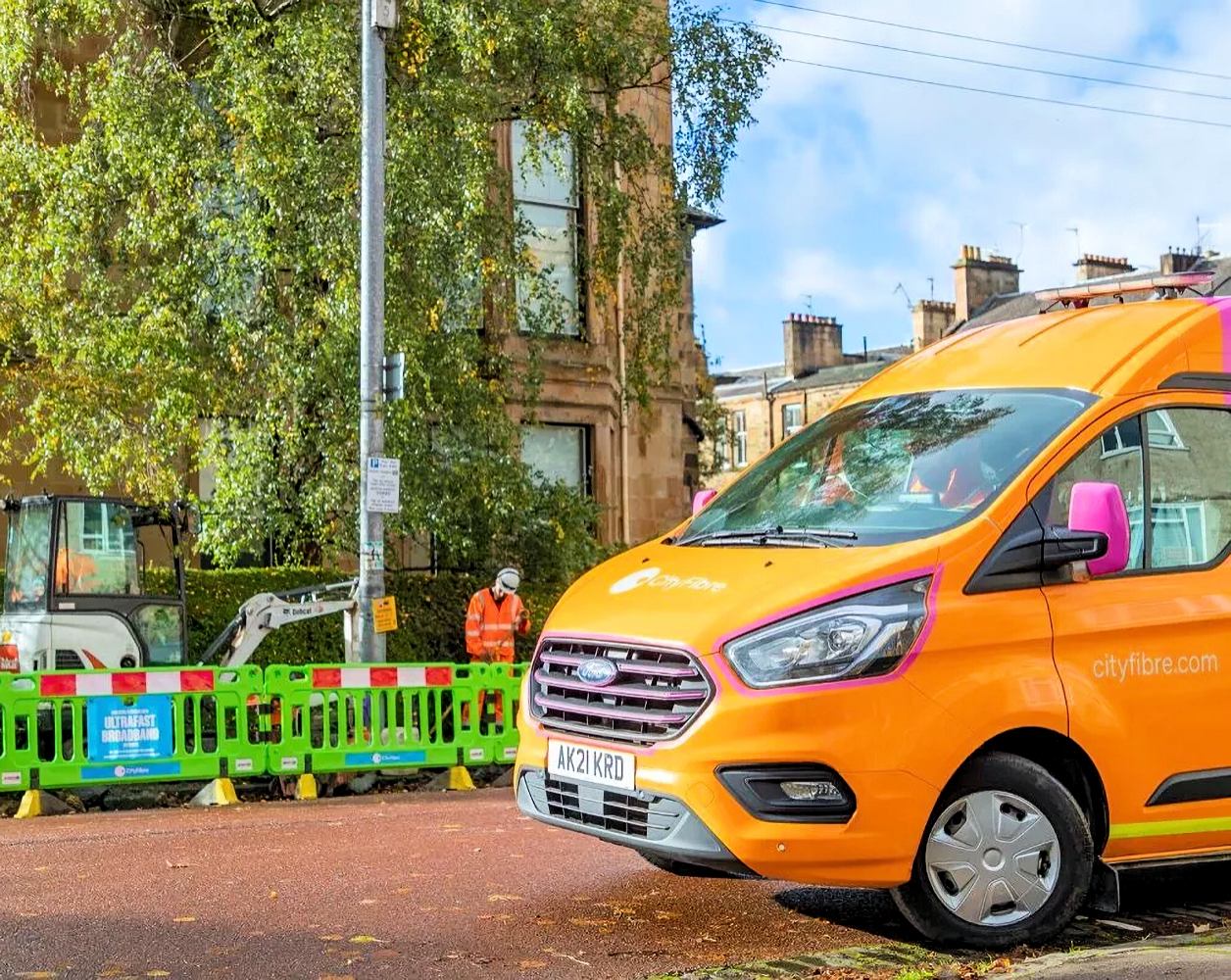








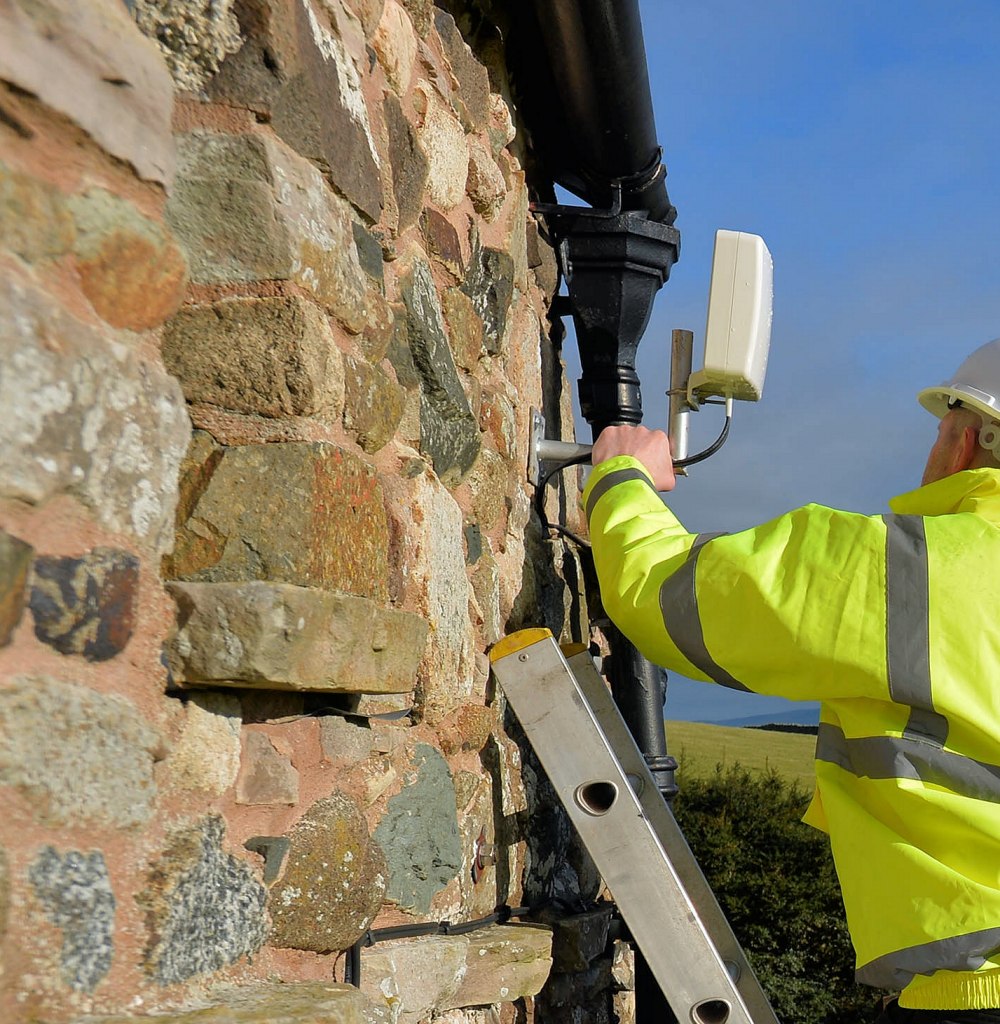







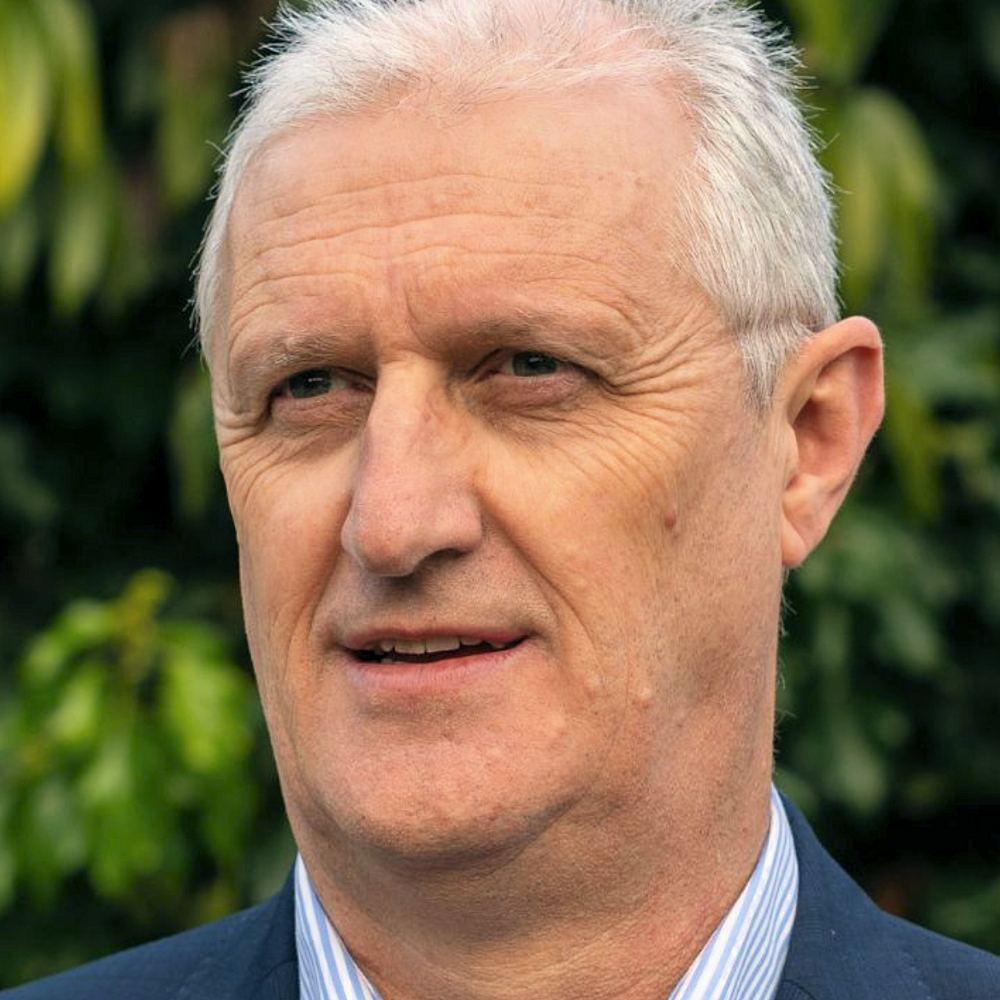

Imagine giving broadband companies targets to role out Full fibre broadband and then thinking that rules wont be broken . On a daily basis i’m seeing fibre contractors breaking HSE rules , this is an industry wide problem
HSE is a bit of a different issue from this specific case. But in fairness, most network operators do stick to some strong standards on this front. Many are also members of SHIFT (Safety & Health In Fibre Telecoms). So with some exceptions, the problems, when they do emerge, most often stem from how third-party contractors conduct themselves, rather than the operator’s own in-house teams.
Looking at the areas of Blackpool and the Fylde where Openreach have either built or sorted their plans it appears they’re just not going to pull fibre anywhere without poles any more – no point paying for that themselves if they can get subsidised on a tender for it later. The not spots are getting bigger by the month.
I recently had a conversation with an Openreach contractor, surveying my road for FTTP, he told me that following the survey they submit the plans to Openreach, who then do a cost analysis and decide whether or not to give the contractor the work. I’m not sure what Damien Moore means when he talks about “key stakeholders”, since Openreach will likely operate the same build policies throughout the country.
Personally I don’t mind the wooden poles since I’ve seen them everywhere throughout my life, I take a different view when it comes to the huge mast’s providers like 6G Internet install. I’m sure that Openreach would use ducts wherever possible, but poles may well be needed to access properties anyway, where extensive work is required to install underground. I looked on Streetview at Wennington Road and many of the properties have flagged driveways, so each property would likely need a bespoke solution to access, which would be difficult, time consuming, and expensive, so I don’t think it’s just about the cost of microtrenching the area; I suspect most of the properties across the area are similar to the ones I looked at on Wennington Road, so I can see why Openreach want to use poles, since connecting properties overhead are much simpler and less expensive.
Something else that’s clear from reading the various articles, Openreach postered the area to advise of the upcoming work, so likely met all their legal obligations in relation to this.
I notice the area is covered with lamppost’s, will they be soon be campaigning to have them removed? Since they look far uglier than wooden Telecom poles.
Just to add, Damien Moore said “Openreach’s strict adherence to its own policies and legal responsibilities, particularly if those were taken into account when it was awarded the contract”, what contract is he referring to? Is Southport rollout subsidised in some way?
So unsurprisingly you think its impossible its Openreach’s fault. Wonder why this is.
Absolutely make no sense.
People want decent 4g/5g but they don’t want mobile mast near their houses.
They want fibre broadband but don’t want telephone pole near by their houses.
Only option go for starlink satellite broadband or don’t complain.
People don’t want satellite dishes on their houses 🙂
“poles also have a tendency to rub people up the wrong way. This is particularly true when they’re deployed along streets that haven’t previously had them before, or where too many poles already exist.”
Agree with that statement. Who wants multiple provider poles and spaghetti wiring across the street.
Poles are also old stuff of 100 years ago, and expose wiring that can be cut easily if people need to rely on them for alarms and CCTV traffic meaning criminals can easily bypass/prevent. Make it easier to micro-trench. Its fast and much easier now.
How do you easily deal with the connection’s from the roadside to the wall of the property, after microtrenching the area? If the area was open plan with lawned gardens up to the wall of the property, it’d be easy, Southport isn’t like that.
As far as security’s concerned, residential overhead access is no less secure than underground access, since it’s just as easy to cut cables on the outside of the property however they are supplied; If someone’s that bothered about security then 4G/5G with battery backup is probably the way to go.
Fix Openreach’s duct construction charges. For PIA it’s £35pm in the verges and £85pm for pavements. That’s insane prices.
I’m not a fan of altnets and would prefer Fibre LLU, but Openreach building ducts and everyone else renting them would be better than the current mess of various operators owning poles and ducts.
I agree with Alex A.
Ex Telecom Engineer says it all. Push all the cost back on consumer. Have a 4g/5G the ex telecom engineer says, adding additional cost to consumer. Those are normally on monthly tariffs and you have to go hunting for some prepaid ones and lucky to get them last a year. Got to be an ex BT engineer with that attitude.
How about business investing in their infrastructure properly instead of quick buck engineering from 100 years ago and everyone having to put up with the eyesore? Poles are not robust. Charge a decent install fee (not 100’s or 1000’s) to the consumer to help do it properly. Every little from that is better than no charging. And get the government to then force Altnets to use the same infrastructure.
May I add poles makes an excellent choice when it comes to repairing and replacing because they just go to the affected pole. But if it was underground they would have to spend money to dig underground. People don’t seem to realise they need permission from the local authority to dig trenches plus money is more tighter now it’s not 90s when Telewest Communications dig up the pavements anymore the economy is a lot worse.
The idea that because it’s “engineering from 100 years ago” it has no merit is hilarious.
So-called ‘old engineering’ generally stands the test of time because it’s the most effective solution and no innovation has surpassed it yet. There are literally hundreds of examples of this from railways to bridges.
Always amused by the big brains on here who seem to think they could run the UK’s infrastructure much better. They’d be out of business within a week.
your comment equally hilarious using things like old bridges. That’s because there isn’t a better way to build them as law of Physics was applied and proven; equal and opposite forces!
Now you going to tell me that technically a buried cable trenched properly is no better than on a pole; that the pole is better? No, cause you can’t. It’s just cheaper.
sadly this is a common thought of someone who doesn’t have much background knowledge. if you wanted to disrupt someone’s service, I would argue that UG is just as easy to destroy and not all CCTVS storage is cloud-based.
Micro trenches still require TM, track and locate, permits, manpower and a heck more money and time compared to sticking poles up. this isn’t considering also having to disrupt their gardens. This doesn’t even factor in the cost of damage the alnets cause other networks in UG infrastructure!
Yes, it looks worse I’ll agree but I’d say it will cost easily under half the money and half the time, and it will probably last long enough for another service to come out in years to come (unless the dropwires are near trees).
“How do you easily deal with the connection’s from the roadside to the wall of the property” Well cable TV operators managed well enough when that was the “thing” way back when. I don’t recall Virgin Media having “telegraph” poles. All other utilities go underground for the same good reasons telecoms should.
Strange all these Telco don’t utilise the phrase,
“All our technology hangs from a lump of dead wood”.
LOL
There needs to be more than two or three people complaining before MPs do something like this. I am sick of the noisy few ruining things for the silent majority.
And how do you know it’s the majority? From what I have seen in some reports about pole protests, most if the residents in a road were against.
Not everyone needs their social fix or porn on the fastest connection in it means spoiling an environment because the government/Ofcom been too sloppy in having proper rules.
Also, I still cannot get my head around how current phone and internet is offered underground with no ducting. Is there any pictures/videos of what it looks like? You would just think the cable would get damaged, crushed, bent and snagged so very easily if its just resting under pavement slabs.
Quick buck engineering decisions to “cut costs” on a bean counter’s books. Payback for that now has come around. Another plaster is sought…
It is thick armoured cable buried at depth, not like the way fibre is run now – just a few inches deep. At least it is outside my place.
https://www.britishcablescompany.com/wp-content/uploads/2022/10/CW1128-CST-Armoured.pdf
2pair (black/grey) and 10 pair (grey) are the common direct bury options for BT. Above 10 pair (~4 houses) they generally install duct.
Thanks for that link. That was helpful to see and read.
We are now seeing cables between poles which did not happen in the past.
And quite often through trees as well. There’s a street quite close to me where Openreach have run cables pole to pole through the trees and as the trees have grown it’s putting visible strain on the cables.
Poles are relatively cheap and ubiquitous. Installation is probably the least problematic technically. You can understand why builders like them.
However, every Autumn and Winter, Openreach repair weather damage in my rural neighbourhood, usually from falling branches bringing down lines and, occasionally, poles too.
Perhaps when comparing deployment methods, greater attention is paid to lifetime costs and long term reliability rather than just the upfront capital cost.
There are other technologies for burying fibre and some of them are much cheaper and less disruptive than open trench digging. The alternatives might not always be appropriate for every case, but stating there is no alternative to poles is difficult to prove or disprove when builders simply present what they are doing as a fait accompli with the might of permitted development rights behind them.
A couple of years back, on a 1960s housing estate near to me that has never had poles, Openreach put in FTTP using open trenching. I have no idea what technical or financial considerations resulted in open trenching here but not in Southport. The point is that poles are plainly not inevitable.
Southport is somewhat of an unusual case as poles are very much the exception rather than the rule there. The clean look of it’s urban environment is, at least in part, due to the lack of poles and dangling wires. Who can blame residents questioning if poles really are the only answer ?
Providing the ‘will of the residents’ is just that and not the will of a few self-appointed, self-opinionated objectors then what’s the problem ?
Personally, I’d like Openreach to connect up the CBT and fibre coil that’s been hanging off the pole opposite my house since 2019….
“The clean look of it’s urban environment is, at least in part, due to the lack of poles and dangling wires. Who can blame residents questioning if poles really are the only answer ?”
There’s nothing special about Southport, whether it be the beach or the residential areas behind it. Southport isn’t a place I’d wish to live and it appears others agree with me, since Southport house prices have apparently fallen over the last 12 months. It lacks jobs so most workers would have to commute to Liverpool, Preston, or Manchester; And the lack of FTTP coverage may deter businesses from setting up there, as well as posing some issues for home workers. The Pier is temporarily closed, as is Southport Pleasureland, so Southport needs as much help as it can get to rejuvenate its ailing economy. This is probably the most exciting thing that’s happened in Southport for decades, I suppose the campaigners have found a cure for their boredom.
The post wasn’t meant to be a critique of the built environment in Southport, nor it’s economic profile. I could simply see why they might object to poles.
If the majority in an area want to object to the Openreach Borg Cube doing something then that’s fair enough and good luck with that one.
If they want to question Openreachs’ assertion that poles are the only option and resistance is futile, then go for it !
If they can do this without the objectors to the objectors breaking out the torches and pitchforks, so much the better.
I think this pole issue could be handled only better. For example, if poles might be needed, OR could send a letter to every household to vote whether they wanted poles or underground ducting with options like:
a) Use poles, connection fee will be £100
b) Install new underground infrastructure, connection fee will be £300
And then every area could decide what they wanted. (I would personally favour the second option.)
This would work really well if nobody cared about the build taking a bit longer – like, say, a few extra decades.
We already have a vote. It’s called democracy. We elect government’s and councils to decide this stuff and, if we don’t like it, we elect other ones.
The permitted development rules have come from that democracy.
Every household doesn’t need a further vote about every individual decision in their area. Like what tarmac the council uses on the road outside or what streetlamps are installed or how power and water reaches their homes.
Sorry but this is exactly the mentality which explains why we never get ANYTHING done in this country.
Anyway, as i understand it, you can already ask and pay Openreach to put network underground today. And it costs a lot more than £300.
(Different Alex here)
@Alex
“This would work really well if nobody cared about the build taking a bit longer – like, say, a few extra decades.”
Decades is a bit of the stretch. About 25% of the UK is Direct in Ground.
DIG comes in partial and full, partial has swept tees and ducting up until them. Assuming no blockages this requires no civils to be ready to service, duct only needs laying from the swept tee to the customer and this can be completed upon a customer ordering.
Full DIG would require ducting. Cambridge Uni Fibre Network has ducting prices at £20 per metre for soft (grass), £80pm for roads and £120pm for cobbled streets. They don’t share the cost for pavements but going by Openreach’s inflated prices £40pm would be about right. Assuming most roads are about 5m in the oavement per house that puts it at around £200 per property which fits with the £300/£500 per property for overhead/underground which floats around here.
There are ways to ways to minimise this, like making use of soft dig where available and microtrenching will reduce the price.
Duct repair kits already exist which have a duct split in half which can be wrapped around existing broken duct/cables. A split swept tee could be good for retrofitting onto existing duct or duct installed with directional drilling.
Converting existing overhead properties may be too far, but I’d do it where overhead cables are at high risk and the cost is low. Perfect example is a friend of mine, he lives in the middle of nowhere and is surrounded by flat fields so the windspeed can be high. Openreach recently installed FTTP with it being ducted all the way from the exchange to the side of his garden, where it enters a footway chamber and subsequently a pole for the final few metres. Converting him to underground would only be a few metres of soft dig and would substantially reduce the risk of it breaking in the wind.
His isn’t particularly exceptional, I’ve seen a few rural where it’s ducted right up until the distribution pole.
Forgot to mention.
In the rare case that its full direct in ground BT and overhead electric supply I’d use the power company’s poles if they are unlikely to go underground soon.
If it’s partial direct in ground then a few metres of soft dig ducting on install may be easier then getting an engineer who’s approved to use that power companies’ poles.
Alex, in an ideal world I would 100% agree with you. But I don’t think the world is anywhere near that, unfortunately.
I’m not suggesting we need everyone to participate. If OR sent out the notice saying “you have 2 weeks to participate” and then they simply take a simple majority or if no one voted they do whatever they want. Nothing would stop them to also explain underground ducting would take more time. Good work might need more time, but that’s fine. Also, I don’t think it would be an exceptionally high cost to send out a letter before the actual planning starts.
This way one couldn’t say there was no consultation. But if it continues like this erecting poles might no longer be under the permitted development rules in the future. (Speaking of democracy,) Before the elections this could be an easy win to please the NIMBYs.
@Alex A
Good information and interesting post
Poles actually do not save teh operator any money at all over a 30 year horizon, it only makes upfront costs cheaper.
Alex’s rule of thumb is about right a pole is typically about £600 to site, and then labour is higher to install. All in I have seen about a £82-97 per prem capital cost difference between ducted and poles in general in a town/street type environment.
However poles need inspecting, and replacing when they get rotten. Your staff need to be trained in working at height and how to spot when to call the pole in for inspection. Repairs to lines cost more, as they need to climb etc, etc. You may need to buy your staff cherry pickers in future as safety rules change (quite likely).
THEY ARE ONLY CHEAPER IN THE SHORT RUN. It’s the same ‘copper’ mindset at work, as when they were investing billions in VDSL and then a billion in GFAST while saying FTTP was too expensive and not possible. Over time UG is cheaper than N poles (over the lifetime of replacements) and lower numbers of faults. The visual benefit is a side point in my view.
“Repairs to lines cost more, as they need to climb etc, etc. You may need to buy your staff cherry pickers in future as safety rules change”
Still significantly cheaper than excavating when repairs need to be made.
@Peter Delaney Thank you!
@Kay £82-97 is smaller than expected, though I guess it depends on the layout of the road and what the pavement is made out of.
Cherry pickers are already needed for poles deemed unsafe to climb and rotten poles is an issue.
@Ben correctly installed ducts rarely need replacement or repairs. Poles can also last a while if correctly installed and treated but need periodic inspection to ensure they aren’t a public liability. Ducts can be left even if collapsed until another cable needs to be run (unlikely when everything is fibre optic) and blockages are less likely as fibre cables take up a lot less space in ducts.
Where’d all this info come from, Alex A?
FYI: if you feel that the Openreach ECC pricing is excessive I’m surprised their customers haven’t complained to Ofcom – this stuff is regulated on a cost+ basis if I recall correctly.
In countries like india they are undertaking programs of work to bury overhead cables. They don’t have a place in the developed world for hanging cables and we could easily have a government mandate no net new poles without planning permission (i.e not included in ECC rights).
This would force operators to look at underground first, and if not then allow a channel for local residents to accept or object to poles depending on their preferences.
On the other side I think mobile masts should continue being a no planning thing under 15M and there may be a case to extend that further.
No operator is going to use poles if ducting is available
I feel now would be the perfect time for nexfibre to move into Southport and spend a chunk of their promised 1 billion for this year on a brand new underground FTTP network to add to VM’s 20% coverage.
Why exactly should people who are served by overhead lines subsidise others to have their cables buried underground?
Whether through their bills or through their taxes.
Have the consultations and of residents are so hung up about overhead lines let them pay the additional costs of having them buried.
Here’s a thought. What about those people trashing the environment and make them pay?
If it tidy without poles and spaghetti wiring before, why should people bow down to business to make money as cheaply as possible and vandalise the area to make it look a dump.
The opertors are starting to roll out FTTP to hrd to reach AREAS and in most cases to make it commercially viable that means poles
I would put the fibre on poles because Southport will be underwater in 30 years.
Surely the sea is in retreat at Southport?
I’m generally fine with poles, but what i’m not fine with is the ugly state the leave the cables and kit in at the top of them.
There seems to be zero attempt to make them look tody with big random loops of fibre hanging down, and the termination boxes hanging off and pointing out in all directions.
I know they can’t just snip the fibre and re-strip to tidy it like wires, but there’s got to be a way they can do this better.
Simple answer is to give them the option. They either have poles or no broadband UNLESS they are prepared to cover the additional cost of putting in ducting. That will not be cheap
Southport Council used to pay an annual amount of money to the G.P.O. so that all phone lines were underground. This is wny there are no poles in the four exchange areas that cover Southport.
Whether this “fee” was continued when Southport Council became Sefton in 1973 I do not know.
(info from a B.T. external planning engineer a few years ago.)
Southport has ALL services underground in case of nuclear attack from Skynet. World headquarters must be protected. Sorry mark x
Many posters are missing the point here. A single pole can serve up to 20 properties in an area similar to those described in the OP, with no need to dig into each property. The savings are significant. If residents want underground they should raise the money and pay or build it themselves. Why are these people so entitled, others have had poles for 100 years, why not Southport. The reason why telecoms operators have a right to erect poles is because comms infrastructure, inc Fibre, is essential for economic growth. The MP should get behind that and support Openreach in this instance. After 6 months the poles wont be noticed. Direct buried cable in suburban areas was a mistake that predates privatisation. BT should not carry the can for that one.
Nice to get a post from the Openreach CEO.
Openreach are the most wonderful multi billion pound company in the world.
It is scandalous that people should question *any* decision they make and should instead accept that everything they say or do is in our best interests.
People who do object are the distilled essence of pure evil and a menace to the spiritual purity of the Openreach sphere of benevolence.
No, not really. Openreach are a commercial company just like any other, and as such, can have their decisions and actions questioned.
The purpose of poles was an eye-opener though.
How is it other towns can dig up the ground to lay these fibre cables but its too costly for these guys in certain towns?.